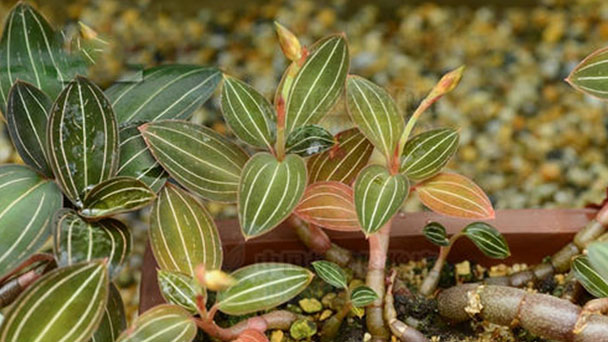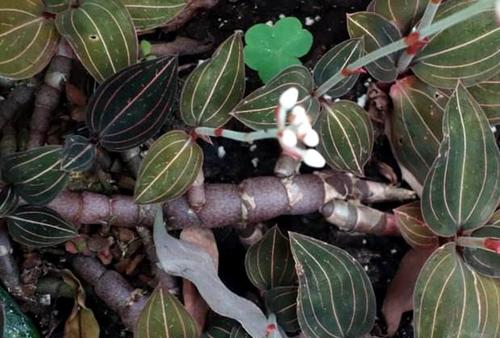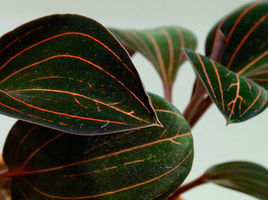Propagation methods of Ludisia discolor
Written by Maggie
Mar 17 2021


Division propagation methods of Ludisia discolor
Ludisia discolor division propagtion can be done in spring and autumn, and usually every three years. Any plant with a high density of pseudobulbs can be separated, and at least 5 pseudobulbs that are joined together should be kept in each cluster. Before planting to reduce irrigation, so that the basin soil then. After plant separation, cover the bottom hole of the basin with broken tiles, then spread rough stones, occupying 1/5 to 1/4 of the depth of the basin, then put coarse-grained soil and a small amount of fine soil, and then plant with sandy loam rich in humus. The depth of planting was to put the fake bulb into the soil just now. The edge of the basin was left at 2cm along with the mouth and covered with green cloud grass or fine stones. Finally, water was poured into the shade for 10-15 days to keep the soil moist.

Seed propagation methods of Ludisia discolor
The seed of Ludisia discolor is very fine. There is only one embryo with incomplete development inside the seed, germinating force is very low, together with seed skin it is not easy to absorb water. Sow with the conventional method cannot germinate, and we need to use orchid fungus or artificial medium to supply nutrient, ability germinates. Planting fruit had better choose not cracking, surface with 75% alcohol after sterilization, remove the seeds, soaking with 10% sodium hypochlorite for 5-10 minutes, take out three times with sterile water rinse again can play in the cultivation of the bottle containing medium, and dark in the pure, the temperature about 25 c, stirring and then moved to the light that can form the original bulb. From sowing to transplanting, it takes half a year to a year. Tissue culture has been successful and can be propagated in this way if conditions permit.

Latest Updated
- Benefits of Bugleweed - 7 Science-backed Health Benefits
- Bugleweed Dangers & Side Effects - Is It Poisonous?
- How to Plant Evergreen Trees - What You Should Know
- When to Plant Evergreens - Grow Guide for Evergreen Trees
- 12 Wonderful Evergreen Shrubs for Your Garden
- 12 Popular Evergreen Plants with Pictures for Beginners
- When And How To Prune A Lilac Bush Like a Pro
- How to Grow & Care for Lilac Vine (Hardenbergia Violacea)
- Japanese Lilac Tree (Syringa Reticulata) Care & Propagation Guide
- Shumard Oak Pros and Cons - What to Know
Popular Articles
- Winter maintenance of Antirrhinum Majus
- How to Grow Terminalia Mantaly Tree
- How to Grow and Care for Crossostephium Chinense
- How to grow Antirrhinum Majus in spring
- Peristeria Elata (Dove Orchid) Profile: Info & Care Guide
- Underwatered Snake Plant (Sansevieria Trifasciata) - Signs And How To Fix
- How to Care for Brazilian Jasmine Plant (Mandevilla Sanderi)
- How to Grow & Care for Graptopetalum Purple Delight in Summer
- Rosa Chinensis (China Rose): Plant Growing & Care Tips
- How to Care for Baby Sun Rose (Aptenia Cordifolia)